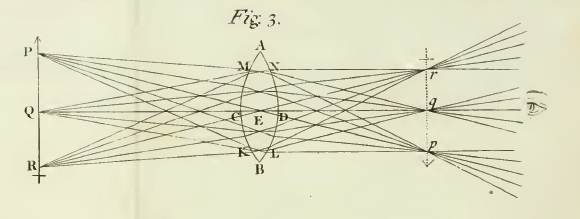
The sequence shows the difference between the original image (obtained with a wrong key) and the unencrypted one. (Credit: Image courtesy of Universitat Jaume I)
ScienceDaily (Dec. 20, 2010) — Researchers from the UJI (Universitat Jaume I) Optics Research Group (GROC) in Castelló, Spain, have developed a new tool for the field of scientific imaging. A sensor of just one pixel can record high-quality images and distribute them securely, that is, without allowing unauthorised people access to information.
In 2009, Willard S. Boyle and George E. Smith received the Nobel Prize in Physics for having succeeded in capturing images with a digital sensor. The key was a procedure that recorded the electrical signals generated via the photoelectric effect in a large number of image points, known as pixels, in a short period of time. The CCD sensor in a photo camera acts as the human-eye retinal mosaic. Since their invention, the use of the digital format for recording images has revolutionised various fields, photography amongst them, as it facilitates image processing and distribution.
Digital cameras with CCD sensors of 5, 6 and even 12 million pixels are now common. As the dimension of sensors is always the same (typically, 24.7 square millimetres), one may logically think that the higher the number of pixels, the better the image quality will be. However, this idea is not quite right as there are other factors involved, such as the quality of the lens. Conversely, more memory is needed for storing these images (the size of a 6-million pixel digital camera image is about 2 Mb).
In recent years, the world of image technologies has become a booming scientific field, mainly because of biomedical applications. Holographic microscopes, light-operated scissors, laser scalpels, and so on, have enabled the design of minimally invasive diagnosis and surgery techniques. In this context, one amazing possibility that researchers have recently demonstrated is that of capturing high-quality digital images with a sensor using just a single pixel. This technique, baptised by scientists as 'ghost imaging', is based on the sequential recording of the light intensity transmitted or reflected by an object illuminated by a sequence of noisy light beams. This noisy light is what we observe, for example, when we illuminate a piece of paper using a laser pointer.
The GROC researchers have successfully captured 2D object images (such as the UJI logo or the face of one of the maids of honour from the famous Las Meninas painting as reinterpreted by Picasso in 1957) using this amazing single-pixel camera. The key for the success lies in the use of a small 1-inch LCD screen, similar to that used in video projectors or those we have at home, but in miniature. Its properties or features can be modified using a computer in order to generate the necessary light beams.
Furthermore, the researchers from Castelló have demonstrated, for the first time and on a worldwide scale, the possibility of adapting the technique in such a way that it allows an image to be securely sent to a set of authorised users using a public distribution channel, such as the Internet. The information transmitted is a simple numerical sequence that allows the image to be retrieved, but only if one knows the hidden codes enabling the generation of the noise patterns with which the pubic access information has been created.
The first results of this study, which is still under way, were published in the first July issue of the journal Optics Letters, and a month later Nature Photonics, the main journal in optics, included a review of it in its September issue, in the section containing the most relevant articles published in the field.
The technology applied to the single-pixel camera had not yet been used for image encryption, but it is being studied now by several research groups -- including GROC- to obtain images of biological tissues which, because of their unusual transparency or their location in the more internal parts of the body (some centimetres under surface mucus), are difficult to view using pixelated devices such as those of today's digital cameras. Furthermore, the researchers point out that using this technique for image encryption will improve safety in image transmission, product authentication, or will simply hide information from undesired people, thus making it a highly efficient tool against data phishing.
Disclaimer: Views expressed in this article do not necessarily reflect those of ScienceDaily or its staff.

No hay comentarios:
Publicar un comentario